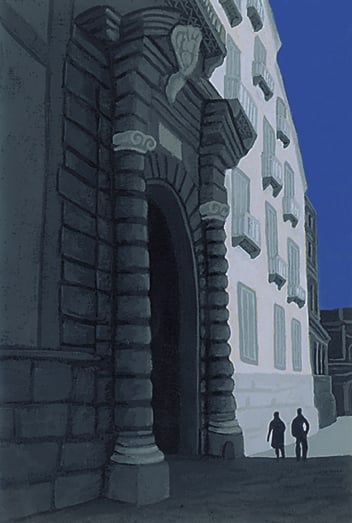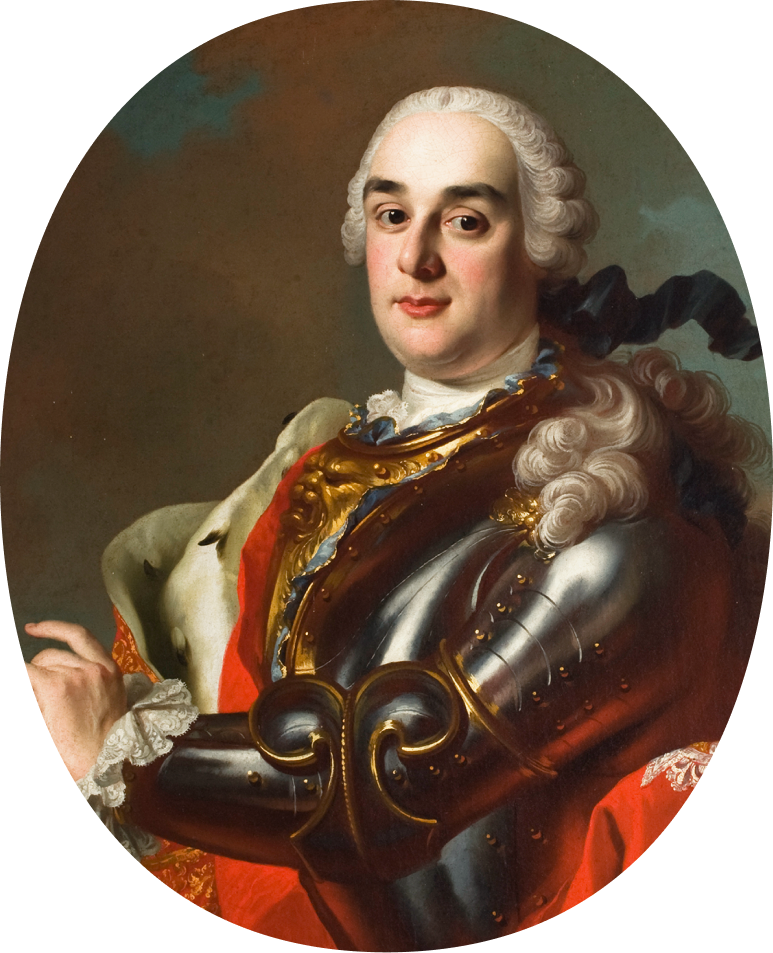The Prince of Sansevero Myth

The birth of a legend
Around the figure of Raimondo di Sangro, Prince of Sansevero, arose veritable myths even during his lifetime. Certainly, di Sangro fuelled them, writing in his Lettera Apologetica about the “products of his wonderful genius”, sending letters on the discovery of a “perpetual flame” to great academics and opening the doors of his palace to European travellers. Anxious to be recognised as an inventor of the most varied discoveries of the techniques and the arts, but at the same time reluctant to reveal their formulae or secret mechanisms, he caused curiosity and admiration among his contemporaries. If to this we add the nobility of his birth, the fame of his endless culture, his role as Grand Master of the Free Masons and the prohibition of the Lettera Apologetica by the Church, it will become clear how Raimondo di Sangro became a symbol, enigmatic but powerful, of the intellectual ferment and the dream of greatness of his generation.
“He was not an academic but an entire academy”

In 1752, the censors of the Congregation of the Index of Prohibited Books recognised in him “a singular, marvellous, one might say prodigious genius”. Two years later, Giangiuseppe Origlia concluded the biography of Sansevero describing him as “one of those heroes, which nature sometimes deigns to produce to extol her greatness”. Antonio Genovesi recalls him as “a man versed in all that is great and glorious”, a description very similar to that found on di Sangro’s funeral plaque (conceived in 1759), according to which he was an “extraordinary man, gifted in all he dared to undertake”, as well as being a “famous investigator into the most recondite mysteries of Nature”. After meeting the Prince, the astronomer de Lalande wrote in his travel diary that he “wasn’t an academic, but an entire academy”. Twenty years after the death of di Sangro, Giuseppe Maria Galanti – a disciple of Genovesi – dedicated a whole chapter of the Short description of Naples to him to celebrate “the greatness of his genius”, while the Historical-critical essay on typography in the Kingdom of Naples (1793) by Lorenzo Giustiniani exalted the exceptional quality of the publications produced by the press at the Palazzo Sansevero. At the turn of the following century, among the Poetic Portraits of Carlantonio de Rosa di Villarosa appears a sonnet dedicated to Raimondo di Sangro. After a period of relative obscurity, at the end of the nineteenth century, the myth of the Prince came once more to the fore, thanks to writers of the calibre of Luigi Capuana, Salavatore di Giacomo and Benedetto Croce, who dedicated beautiful pages to his extraordinary genius.
The verdict of posterity, between esotericism and historical enquiry
The inventions, the subjects of his books, the clandestine reprinting of a mysterious work like the Count of Gabalis and, especially, the complex and veiled symbology of the Sansevero Chapel have guaranteed Raimondo di Sangro a place of honour in the history of esoteric studies. Thus, many twentieth-century essays on the initiatic tradition name him. He is so fascinating that, from the mid-twentieth century, various theories have evolved on how to interpret – sometimes improbably – the iconography of the Chapel and the message contained in his works or suggested by his experimentation. At the same time, the academic world has began a documented rereading of his activity, placing it in the broader context of the Neapolitan and European cultural growth in the eighteenth century. One recalls the important studies by the historian Vincenzo Ferrone, the art historian Rosanna Cioffi, and the recent commentated and annotated editions of di Sangro’s works, edited by Leen Spruit for the alóς publishing house.
The Prince of Sansevero in contemporary culture

Over the last decades, the myth of the Prince of Sansevero has also spread thanks to the mass media, literature and art. It is no longer possible to count the documentaries made by companies from all over the world, which have illustrated the alchemic-Masonic path of the Sansevero Chapel and the personality of its patron. From the artistic and literary point of view, Feliciano de Cenzo composed a poem in Neapolitan in 1977, dedicating it to Raimondo di Sangro and his Chapel, while in 1988 Alessandro Coletti wrote a biography of the Prince in novel form. An issue of the comic Martin Mystère and a series of childrens’ books published by Colonnese have been based on Sansevero. The American writer Nathan Gelb used the Prince of Sansevero as the “detective” in a series of romans noirs published in Italy by Sperling & Kupfer (the first of which came out in 2006). Lello Esposito, an artist of international fame, did a portrait of the Prince in one of his most famous paintings, while in 2008, a work group under Maestro Roberto De Simone put on a musical/theatrical performance in memory of Raimondo di Sangro.



